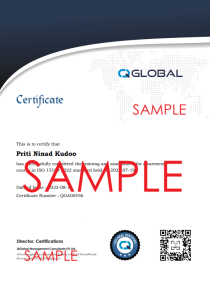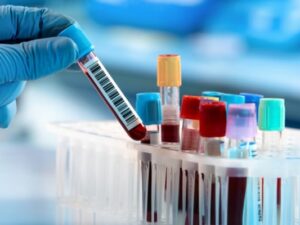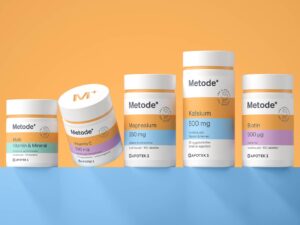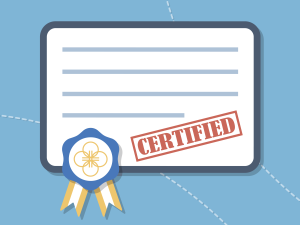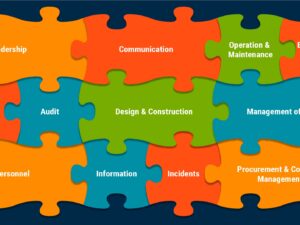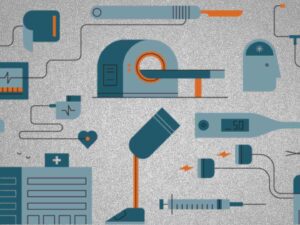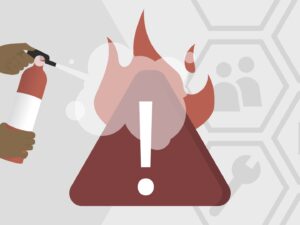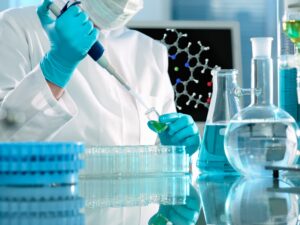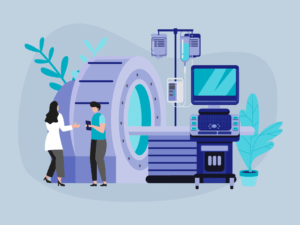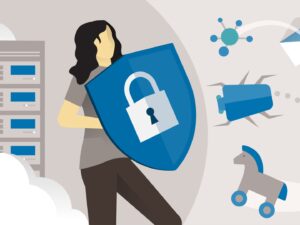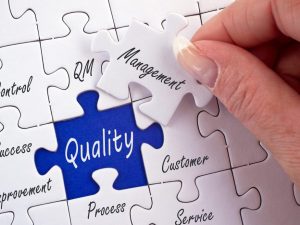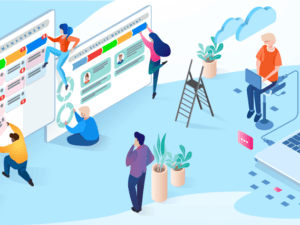ISO 15189 2022 Medical laboratories — Requirements for quality and competence - Lead implementer course
- Description
- Curriculum

ISO 15189 2022 standard specifies requirements for quality and competence in medical laboratories. ISO 15189 standards can be used by medical laboratories in developing their quality management systems and assessing their own competence. It can also be used for confirming or recognizing the competence of medical laboratories by laboratory customers, regulating authorities and accreditation bodies. ISO 15189 standard aims to promote the welfare of patients and satisfaction of laboratory users through confidence in the quality and competence of medical laboratories. ISO 15189 standard contains requirements for the medical laboratory to plan and implement actions to address risks and opportunities for improvement. Benefits of implementing a laboratory quality management system includes but not limited to – increasing the effectiveness of the management system, decreasing probability of invalid results, and reducing potential harm to patients, laboratory personnel, the public and the environment. An effective implementation is essential if organizations are to maximize the cost saving, performance, and customer satisfaction benefits of ISO 15189 2022 standards. ISO 15189 2022 lead implementer course is good for those who need an overview on the ISO 15189 2022 standards, or those who will be involved in the implementation of ISO 15189 2022 standards within a testing laboratory. ISO 15189 2022 implementation course will guide you through the implementation process by explaining the requirements of ISO 15189 2022 and how they can be applied using international best practices. Using a step-by-step approach, you will learn how to develop an implementation plan, create the necessary documentation, monitor the quality management system for labs, and achieve continual system and quality improvement.
Who Should Attend?
- Anyone responsible for implementing ISO 15189 2022 standard
- Those who want to learn how to interpret the requirements of ISO 15189 2022 standard
- Laboratory owners, managers, QA executives and testing personnel involved in laboratory activities
Key Benefits
- Understand concepts and importance of the ISO 15189 2022 management system principles.
- Grasp the application of risk-based thinking, leadership and process management
- Interpret requirements of ISO 15189 2022 standard and its effective application for managing and improving the functioning of lab through process approach.
- Understand and develop skills for implementation of management system
- Build stakeholder confidence by managing processes in line with the latest requirements
- Understand and develop problem solving skills
- Maintain and continually improve your laboratory’s quality management system
- Learn techniques to create and manage documents and records relevant to ISO 15189 2022 quality management system , critical to the testing services delivered and those required to meet customer and regulatory requirements
- Learn skills in human resource management, supplier management, customer management, operations management, inventory management and laboratory management
- Learn to identify and mitigate internal and external issues relevant to the laboratory
- Learn to identify stakeholder expectations and prepare action plans to fulfill them
- Learn to define and optimize the processes in the laboratory
- Identify improvement objectives and plans to achieve them
- Understand traceability requirements relevant to sample collection and handling
- Develop an effective business communication plan
- Learn techniques to manage nonconformity in testing and take corrective actions
- Fill gaps in your professional knowledge
Learning & Evaluation Method
This is a live and interactive course. Once you purchase the course, our team will contact you to plan the training. No matter where you are located, we schedule the classes based on your convenience and time zone. You can plan to attend the training in sessions of 4 or 8 hr duration, based on how much time you can spend in a day.
Certification
There are increasing numbers of organizations, who prefer candidates those who have completed management system trainings from a recognized institution. Certification demonstrates your commitment to superior professionalism, upholding industry standards, and continued learning. These merits can help boost your professional credibility and prestige within your own network, in your organisation, with your current clients, and when pursuing new business opportunities. After the successful completion of the course and final exam, you will be awarded with a certificate of completion issued by QGlobal. Your credentials will be made available in the global online directory and can be verified by anyone searching with the certificate number. Without doubt we can say that our training courses are well recognized and sought after by organizations across various geographies.
Buy for group Are you planning to buy this course for a group? We have the best prices for you! Select ‘Buy for Group’ option and add to the cart. You will get a discount of 60 – 75% for a group of up to 10 participants. To make a group purchase, create your group name and add individual emails of up to 10 participants. Each participant will get the access to the course materials, exam and the certificate. We will arrange one live-online session for the entire group.
Total: 206 Courses View all
Total: 206 Courses View all
-
1Introduction to standards and certification
- Purpose of standardization
- Benefits of certification
-
2Introduction to ISO 15189 2022 standards
- Introduction to ISO 15189 2012 standards
- Process approach
- Risk based thinking
- PDCA
- Medical laboratory accreditation
- Benefits of medical laboratory accreditation
- International Laboratory Accreditation Corporation (ILAC)
-
3ISO 15189 2022 General requirements
Clause 4.1 Impartiality
Clause 4.2 Confidentiality
Clause 4.2.1 Management of information
Clause 4.2.2 Release of information
Clause 4.2.3 Personnel responsibility
Clause 4.3 Requirements regarding patients
-
4ISO 15189 2022 Structural and governance requirements
Clause 5.1 Legal entity
Clause 5.2 Laboratory director
Clause 5.2.1 Laboratory director competence
Clause 5.2.2 Laboratory director responsibilities
Clause 5.2.3 Delegation of duties
Clause 5.3 Laboratory activities
Clause 5.3.1 General
Clause 5.3.2 Conformance with requirements
Clause 5.3.3 Advisory activities
Clause 5.4 Structure and authority
Clause 5.4.1 General
Clause 5.4.2 Quality management
Clause 5.5 Objectives and policies
Clause 5.6 Risk management
-
5ISO 15189 2022 Resource requirements
Clause 6.1 General
Clause 6.2 Personnel
Clause 6.2.1 General
Clause 6.2.2 Competence requirements
Clause 6.2.3 Authorization
Clause 6.2.4 Continuing education and professional development
Clause 6.2.5 Personnel records
Clause 6.3 Facilities and environmental conditions
Clause 6.3.1 General
Clause 6.3.2 Facility controls
Clause 6.3.3 Storage facilities
Clause 6.3.4 Personnel facilities
Clause 6.3.5 Sample collection facilities
Clause 6.4 Equipment
Clause 6.4.1 General
Clause 6.4.2 Equipment requirements
Clause 6.4.3 Equipment acceptance procedure
Clause 6.4.4 Equipment instructions for use
Clause 6.4.5 Equipment maintenance and repair
Clause 6.4.6 Equipment adverse incident reporting
Clause 6.4.7 Equipment records
Clause 6.5 Equipment calibration and metrological traceability
Clause 6.5.1 General
Clause 6.5.2 Equipment calibration
Clause 6.5.3 Metrological traceability of measurement results
Clause 6.6 Reagents and consumables
Clause 6.6.1 General
Clause 6.6.2 Reagents and consumables — Receipt and storage
Clause 6.6.3 Reagents and consumables — Acceptance testing
Clause 6.6.4 Reagents and consumables — Inventory management
Clause 6.6.5 Reagents and consumables — Instructions for use
Clause 6.6.6 Reagents and consumables — Adverse incident reporting
Clause 6.6.7 Reagents and consumables — Records
Clause 6.7 Service agreements....
Clause 6.7.1 Agreements with laboratory users
Clause 6.7.2 Agreements with POCT operators
Clause 6.8 Externally provided products and services
Clause 6.8.1 General
Clause 6.8.2 Referral laboratories and consultants
Clause 6.8.3 Review and approval of externally provided products and services
-
6ISO 15189 2022 Process requirements
Clause 7.1 General
Clause 7.2 Pre-examination processes
Clause 7.2.1 General
Clause 7.2.2 Laboratory information for patients and users
Clause 7.2.3 Requests for providing laboratory examinations
Clause 7.2.4 Primary sample collection and handling
Clause 7.2.5 Sample transportation
Clause 7.2.6 Sample receipt
Clause 7.2.7 Pre-examination handling, preparation, and storage
Clause 7.3 Examination processes
Clause 7.3.1 General
Clause 7.3.2 Verification of examination methods
Clause 7.3.3 Validation of examination methods
Clause 7.3.4 Evaluation of measurement uncertainty (MU)
Clause 7.3.5 Biological reference intervals and clinical decision limits
Clause 7.3.6 Documentation of examination procedures
Clause 7.3.7 Ensuring the validity of examination results
Clause 7.4 Post-examination processes
Clause 7.4.1 Result reporting
Clause 7.4.2 Post-examination handling of samples
Clause 7.5 Nonconforming work
Clause 7.6 Control of data and information management
Clause 7.6.1 General
Clause 7.6.2 Authorities and responsibilities for information management
Clause 7.6.3 Information systems management
Clause 7.6.4 Downtime plans
Clause 7.6.5 Off site management
Clause 7.7 Complaints
Clause 7.7.1 Process
Clause 7.7.2 Receipt of complaint
Clause 7.7.3 Resolution of complaint
Clause 7.8 Continuity and emergency preparedness planning
-
7ISO 15189 2022 Management system requirements
Clause 8.1 General requirements
Clause 8.1.1 General
Clause 8.1.2 Fulfilment of management system requirements
Clause 8.1.3 Management system awareness
Clause 8.2 Management system documentation
Clause 8.2.1 General
Clause 8.2.2 Competence and quality
Clause 8.2.3 Evidence of commitment
Clause 8.2.4 Documentation
Clause 8.2.5 Personnel access
Clause 8.3 Control of management system documents
Clause 8.3.1 General
Clause 8.3.2 Control of documents
Clause 8.4 Control of records
Clause 8.4.1 Creation of records
Clause 8.4.2 Amendment of records
Clause 8.4.3 Retention of records
Clause 8.5 Actions to address risks and opportunities for improvement
Clause 8.5.1 Identification of risks and opportunities for improvement
Clause 8.5.2 Acting on risks and opportunities for improvement
Clause 8.6 Improvement
Clause 8.6.1 Continual improvement
Clause 8.6.2 Laboratory patients, user, and personnel feedback
Clause 8.7 Nonconformities and corrective actions
Clause 8.7.1 Actions when nonconformity occurs
Clause 8.7.2 Corrective action effectiveness
Clause 8.7.3 Records of nonconformities and corrective actions
Clause 8.8 Evaluations
Clause 8.8.1 General
Clause 8.8.2 Quality indicators
Clause 8.8.3 Internal audits
Clause 8.9 Management reviews
Clause 8.9.1 General
Clause 8.9.2 Review input
Clause 8.9.3 Review output
-
8Laboratory safety
- Laboratory safety
- Recognition of hazards
- Assess risks
- Minimize Risks
- Prepare for emergencies
- Safe laboratory practices
- Immunization
- Laboratory safety guidelines
- Action plan
-
9LI 01 Building the team
-
10LI 02 Conducting gap analysis
-
11LI 03 Preparing implementation plan
-
12LI 04 Creating awareness
-
13LI 05 Conducting training
-
14LI 06 Procuring documents
-
15LI 07 Creating management system manual
-
16LI 08 Creating policies and procedures
-
17LI 09 Creating forms and templates
-
18LI 10 Planning for certification
-
19LI 11 Implementation methodology
- Building the culture
- Plan-Do-Check-Act
-
20LI 12 Role of leadership in implementing the management system
- Leadership concepts
- Role of leaders in implementing the management system
- 12 Characteristics of team leaders and managers
-
21LI 13 Employee motivation and involvement
- Employee wants
- Achieving a motivated workforce
-
22LI 14 Obstacles in implementing the management system
- Inability to manage the change
- No planned review of the system
- Inadequate planning
- Not aligning the goals and matrices
- Poor commitment from top management
- Differences between departments and individuals
- Lack of awareness and not providing continuous training
- Poor documentation
- Inadequate monitoring, measuring and analysis of data and results
- Not paying attention to internal and external customers
- Failure to continually improve
- Failure to motivate and empower employees
-
23Practice Questions - ISO 15189 trainingExam duration is 120 minutesThere are total 85 questions in this examAll questions carry 1 mark eachSelect only the most appropriate answerMinimum pass mark is 50%You have 3 attempts to pass the exam
-
24Quality control in medical laboratory
• Exam duration is 45 minutes
• All questions carry 1 mark each
• Select only the most appropriate answer
• Minimum pass mark is 50%
• You have 3 attempts to pass the exam
-
25Best laboratory practices in medical laboratories
-
26Measurement uncertainty
• Exam duration is 45 minutes
• All questions carry 1 mark each
• Select only the most appropriate answer
• Minimum pass mark is 50%
• You have 3 attempts to pass the exam
-
27Ensuring validity of test results
• Exam duration is 60 minutes
• All questions carry 1 mark each
• Select only the most appropriate answer
• Minimum pass mark is 50%
• You have 3 attempts to pass the exam

